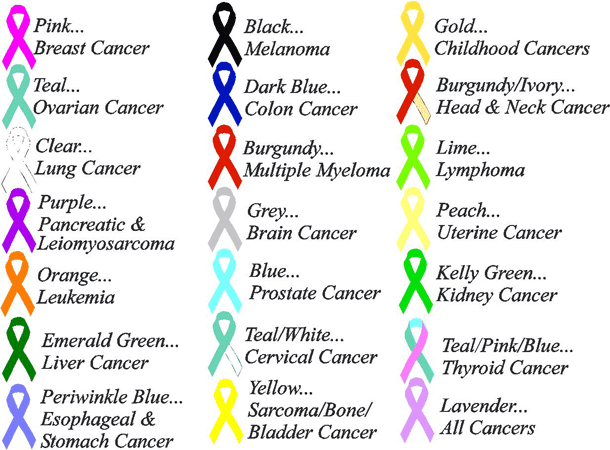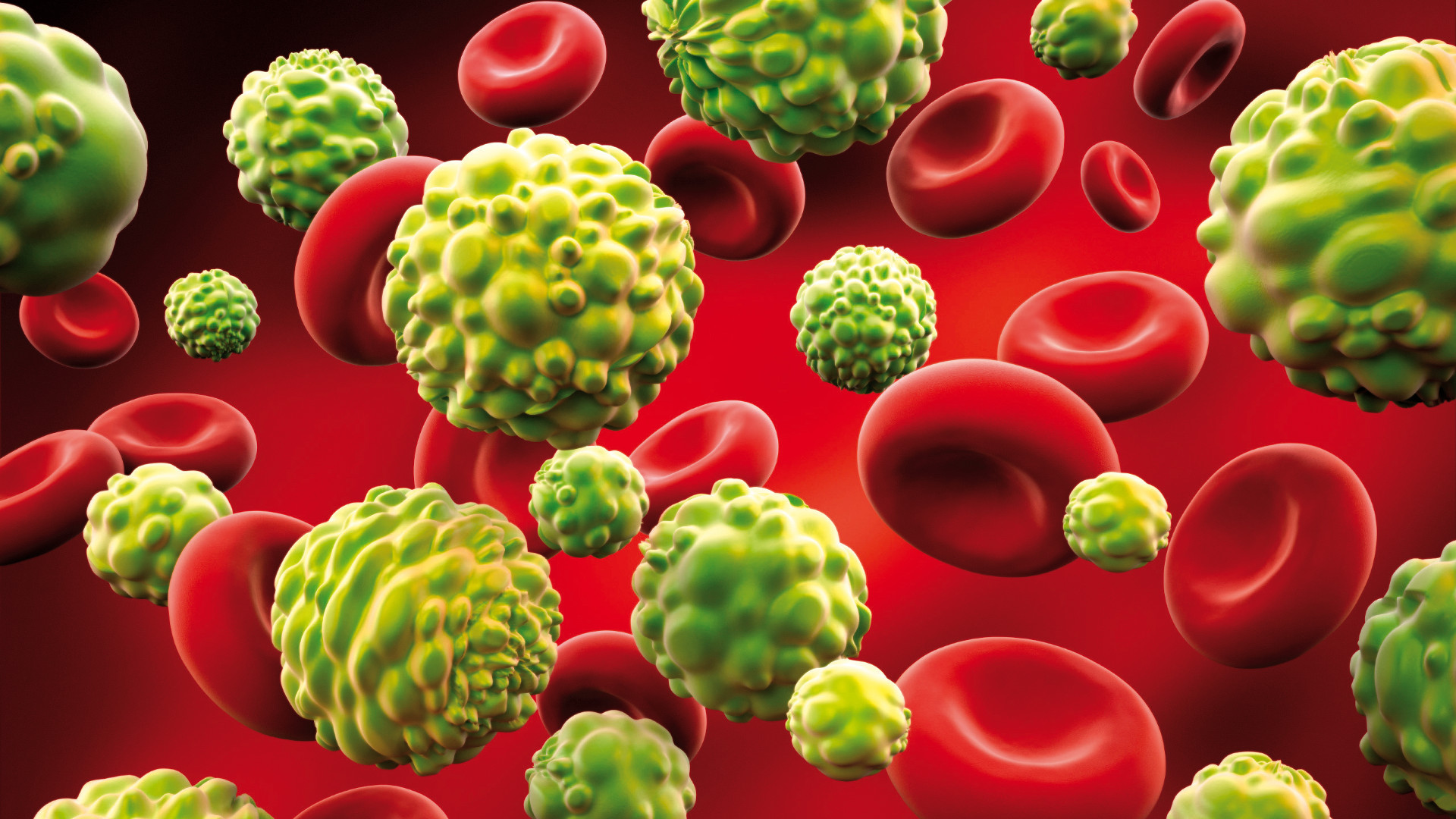

 - Several factors increase the risk of cancer (officially known asmalignant neoplasm), including pollutants,tobacco use, certain infections, radiation, obesity, and lack of physical exercise.
- An estimated 5 to 10% of cancers are entirely hereditary. Most cancers develop through a combination of hereditary and environmental factors.
- Smoking causes an estimated 90% of lung cancer. Tobacco has killed 50 million people in the last decade. If trends continue, a billion people will die from tobacco use and exposure this century, which equates to one person every six seconds.
- Those who sleep less than six hours a night are more likely to develop colon cancer than those who sleep more.
- Cancer has two main characteristics: abnormal cell growth and the ability to spread to other parts of the body (metastasis).
- In 2008, there were an estimated 12,667,500 new cases of cancer worldwide. Eastern Asia had the most new cases (3,720,000) and Micronesia the fewest (700). North America had approximately 1,603,900 new cases.
- One in eight deaths in the world are due to cancer. Cancer causes more deaths than AIDS, tuberculosis, and malaria combined.
- Cancer is the leading cause of death in developed countries and the second leading cause of death in developing countries, after heart disease. Globally, heart disease is the number one killer.
- In 2008, 7.6 million people died of cancer globally, which equates to 21,000 cancer deaths a day. By 2030, 21.4 million new cancer cases are expected to occur globally with 13.2 million cancer deaths.
- In 2006, a virus called xenotropic murine leukemia virus-related virus (XMRV) was discovered in prostate cells, leading scientists to believe the virus may play a role in causing aggressive prostate cancer
- The nitrites in hot dogs have been linked to cancer
Skin cancer is the most common form of cancer in the U.S.
- As of January 2008, there were approximately 12 million people alive in the U.S. who had a medical history of cancer.
- The American Cancer Society estimates 577,190 people will die from cancer in the U.S. per year, or more than 1,500 people a day.
- Since February 2009, over 40 million doses of Gardasil have been distributed globally. The FDA and the CDC claim that Gardasil prevents certain types of cervical cancer and that it is safe.
- The word “cancer” is related to the Greek word “crab” because its finger-like projections were similar to the shape of the crab. Galen, a Roman physician, used the word oncos, which is Greek for “swelling.
- The earliest description of cancer was found in the Edwin Smith Papyrus dating back to 1600 B.C. It describes what appears to be breast cancer. Though breast cancer was treated by cauterization with a tool called a “fire drill,” the author ultimately wrote, “There is no treatment.
- In 2008, cervical cancer was the third most commonly diagnosed cancer in women worldwide. An estimated 529,800 were diagnosed, with over 85% of those diagnosed in developing countries.
- Lung, prostate, and stomach cancers are the most commonly diagnosed cancers in men. Breast, cervix, and colorectal cancers are the most commonly diagnosed cancers in women.
- Researchers believe that more than half of all cancers and cancer deaths are potentially preventable.
- Approximately 15% of all cancers worldwide are due to infections. Undeveloped countries have a higher rate of cancers due to infection (26%) than in developed countries (8%). The microbes most responsible for cancer are the bacterium Helicobacter pylori (gastric cancer), HPV (cervical and other cancers), and Hepatitis B and C (liver cancer).
- The most common cancer in women globally is breast cancer, with an estimated 1.4 million new cases diagnosed in 2008. Breast cancer is also the leading cause of cancer death in women worldwide, with an estimated 458,400 deaths a year.
- Nitrites are chemical additives used to preserve and add flavoring to most lunch meats, including cold cuts and hot dogs. Once in the body, they react with body chemicals and turn into cancer-causing carcinogens. Americans eat more than 20 billion hot dogs per year.
 Cancer drugs are the largest category of drugs in terms of sales Cancer drugs are the largest category of drugs in terms of sales- The lifetime risk of a man in the United State of developing an invasive cancer is 45%.
- Women who have no children or who have their first pregnancy after the age of 30 have a slightly higher risk of developing breast cancer than those who become pregnant while they are younger. Breast-feeding may also reduce the risk of breast cancer slightly.
- Human papillomavrius (HPV) infection is the most common sexually transmitted viral infection and is the causative agent of cervical cancer. Although it is the causative agent, most women who are infected do not develop cancer.
- Cancer is not just one disease; rather it is a set of diseases. Different agents cause each type of cancer.
- There are 28 million cancer survivors worldwide.
- African Americans are more likely than any other racial group to develop and die from cancer. Asian Americans and Pacific Islanders have the lowest overall cancer rates.
- While many types of cancers have declined in recent years—including cervical, colorectal, stomach, and lung cancers—other types of cancers have been increasing, including HPV-related oropharyngeal, esophageal adenocarcinoma, melanoma of the skin, and cancers of the pancreas, liver, and intrahepatic bile duct, as well as thyroid and kidney and renal pelvis cancers.
- The majority of research shows being overweight adversely affects survival for postmenopausal women with breast cancer. Conversely, postmenopausal women who are more physically active are less likely to die from breast cancer.
- The National institute of Health (NIH) posits that the cost of cancer in 2007 in the U.S. was $226.8 billion overall. Globally, the economic impact of cancer is substantially higher than any other cause of death.
- Approximately 77% of all cancers are diagnosed in people who are 55 years old or older.
- Skin cancer is the most common form of cancer in the U.S., with over 2 million cases of skin cancers diagnosed every year. Many cases could be prevented by protecting the skin from overexposure from the sun and avoiding indoor tanning.
 - Estimated Chernobyl deaths range form 4,000 to half a million
- Some researchers believe that the Pap smear was not implemented until more than a decade after it was proven to prevent cervical cancer because of fears it would undermine the private practice of medicine, leading to unnecessary surgery and death for millions of women.
- Professor Devra Davis argues that cancer research has been plagued by corporations and politicians manipulating and “fudging” data about cancer-causing toxins such as benzene and tobacco for money. Additionally, she argues that too much of the “War on Cancer” is misdirected by focusing more on treatment rather than on prevention.
- An estimated 12,060 children in the U.S. are diagnosed with cancer and 1,240 will die from cancer annually. Childhood cancers represent less than 1% of all new cancer diagnoses, yet it is the second leading cause of death in children, second to accidents.
- Approximately 175,300 new cancer cases occurred globally in children up to age 14 in 2008. An estimated 96,400 children died from cancer in 2008.
- Studies have found that Holocaust survivors are at a greater risk for developing cancer, mainly due to intense calorie deprivation and stress during WWII.
- Poor dental hygiene can cause gingivitis, an inflammation of the gums. Over time, high levels of inflammation in the body can increase a person’s risk of developing cancer.
- Pharmaceutical companies that market successful cancer drugs are some of the biggest corporations in the world. While there is currently a shortage of cancer drugs, only about 10% of the shortages are due to lack of raw materials. Most shortages are due to corporate decisions to cut down on production caused by money or quality problems.
- Scientists claim that the nuclear disaster at Chernobyl produced the largest group of cancers in history from a single incident.
- Breast cancer is considered a taboo in many Middle Eastern countries, and many women will not get tested because they fear being examined by male doctors.
- During a 13.5-hour surgery, physicians were able to pull out a malignant brain tumor from an 11-year-old girl’s nose in Texas.
- Men who have never married are up to 35% more likely to die from cancer than those who are married. In terms of surviving cancer, women also benefited from being married, but to a lesser extent.
- A Massachusetts mother was convicted of attempted murder for withholding cancer medication from her autistic son. He was just 9 years old when he died of leukemia in 2009.
- Cancer patients have twice the risk of suicide than the general population. Men are more likely to kill themselves immediately after a diagnosis.
- Henreitta Lacks died of cervical cancer in 1951, but not before scientists at Johns Hopkins took samples of her tumor. Because it was the first instance of a successfully established “immortal” cell line, her cells (now called HeLa cells) have been used in several groundbreaking experiments, including polio vaccines and cloning. However, her story has not been without controversy because neither she nor her family gave permission for her cells to be harvested, and her family never benefited financially. Additionally, a HeLa cells contamination problem almost led to a Cold War incident.

New Cancer Cases Worldwide (2008)
| Male Cancer Type | Estimated Cases |
| Lung & Bronchus | 1,095,200 |
| Prostate | 903,500 |
| Colon & Rectum | 663,600 |
| Stomach | 640,600 |
| Liver | 522,400 |
| Esophagus | 326,600 |
| Urinary Bladder | 297,300 |
| Non-Hodgkin lymphoma | 199,600 |
| Leukemia | 195,900 |
| Oral Cavity | 170,900 |
| All sites but skin | 6,629,100 |
| Female Cancer Type | Estimated Cases |
| Breast | 1,383,500 |
| Colon & Rectum | 570,100 |
| Cervix Uteri | 529,800 |
| Lung & Bronchus | 513,600 |
| Stomach | 349,000 |
| Corpus Uteri | 287,100 |
| Liver | 225,900 |
| Ovary | 225,500 |
| Thyroid | 163,000 |
| Non-Hodgkin Lymphoma | 156,300 |
| All sites but skin | 6,038,400 |
 Cancer Deaths Worldwide (2008) Cancer Deaths Worldwide (2008)
| Male Cancer Type | Estimated Cases |
| Lung & Bronchus | 951,000 |
| Liver | 478,300 |
| Stomach | 464,400 |
| Colon & Rectum | 320,600 |
| Esophagus | 276,100 |
| Prostate | 258,400 |
| Leukemia | 143,700 |
| Pancreas | 138,100 |
| Urinary Bladder | 112,300 |
| Non-Hodgkin Lymphoma | 109,500 |
| All sites but skin | 4,225,700 |
| Female Cancer Type | Estimated Cases |
| Breast | 458,400 |
| Lung & Bronchus | 427,400 |
| Colon & Rectum | 288,100 |
| Cervix Uteri | 275,100 |
| Stomach | 273,600 |
| Liver | 217,600 |
| Ovary | 140,200 |
| Esophagus | 130,700 |
| Pancreas | 127,900 |
| Leukemia | 113,800 |
| All sites but skin | 3,345,800 |
|









 Cancer Deaths Worldwide (2008)
Cancer Deaths Worldwide (2008)





























 Cancer drugs are the largest category of drugs in terms of sales
Cancer drugs are the largest category of drugs in terms of sales
Comments
Post a Comment